Abstract
In a series of three experiments, rats were exposed to successive schedule components arranged on two levers, in which lever pressing produced a light, and nose-key pressing produced water in 50% of the light periods. When one auditory signal was presented only during those light periods correlated with water on one lever, and a different signal was presented only during those light periods correlated with nonreinforcement on the other lever, the former lever was preferred in choice trials, and higher rates of responding were maintained on the former lever in nonchoice (forced) trials. Thus, the rats preferred a schedule component that included a conditioned reinforcer over one that did not, with the schedules of primary reinforcement and the information value of the signals equated. Preferences were maintained when one or the other of the auditory signals was deleted, but were not established in naive subjects when training began with either the positive or negative signal only. Discriminative control of nose-key pressing by the auditory signals was highly variable across subjects and was not correlated with choice.
Keywords: conditioned reinforcement, preference, chained schedules, information, stimulus control, rats
Full text
PDF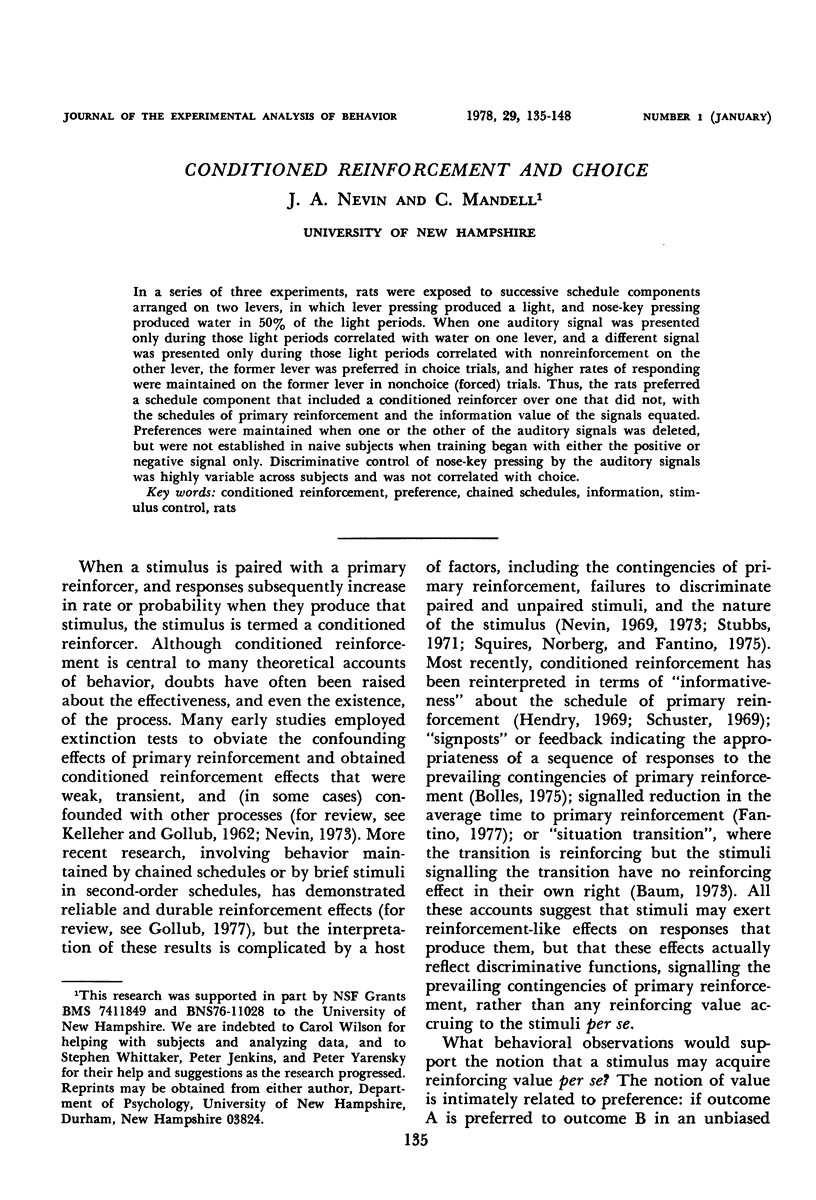
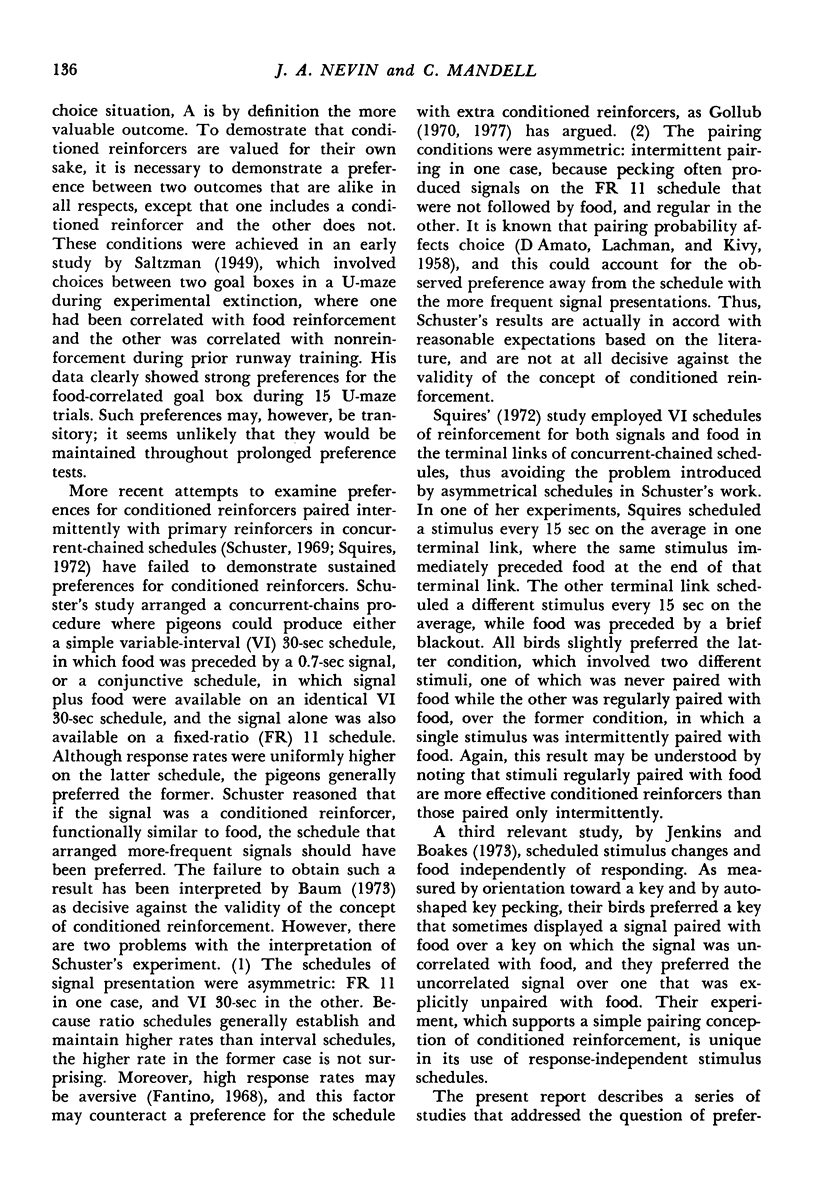
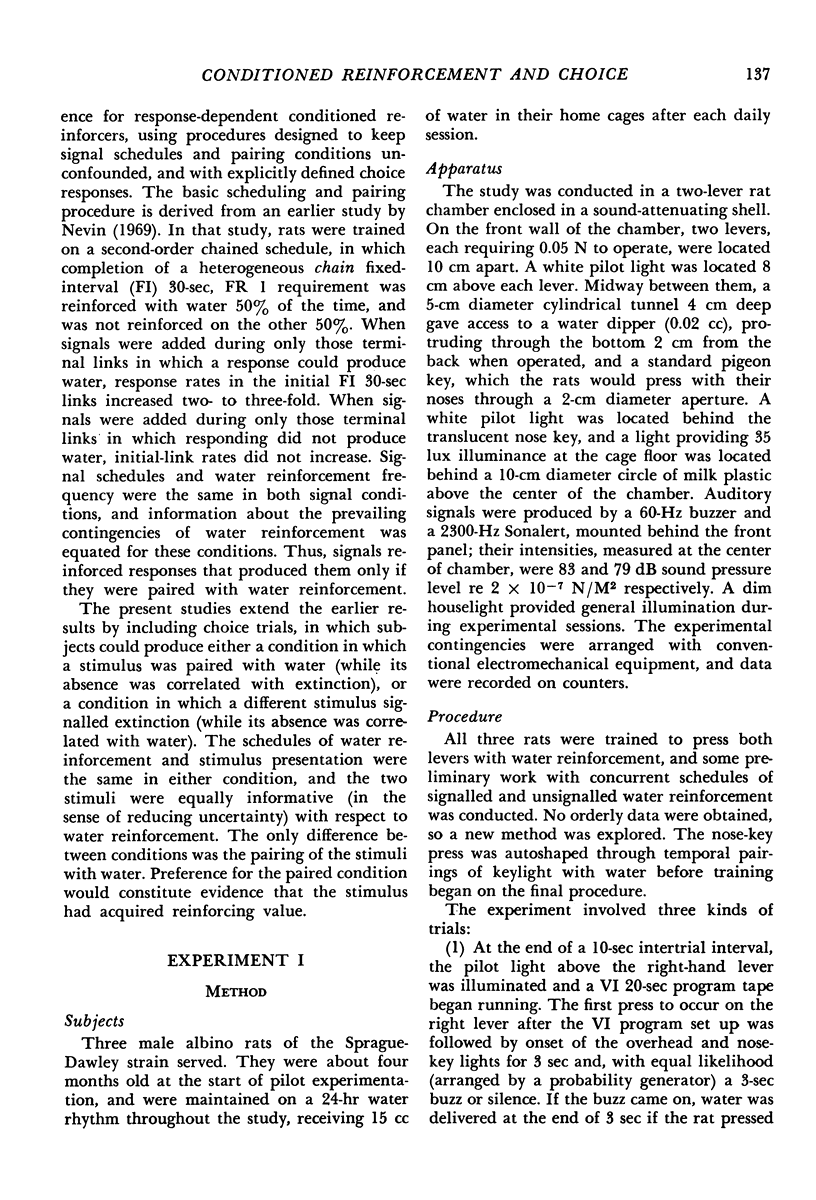
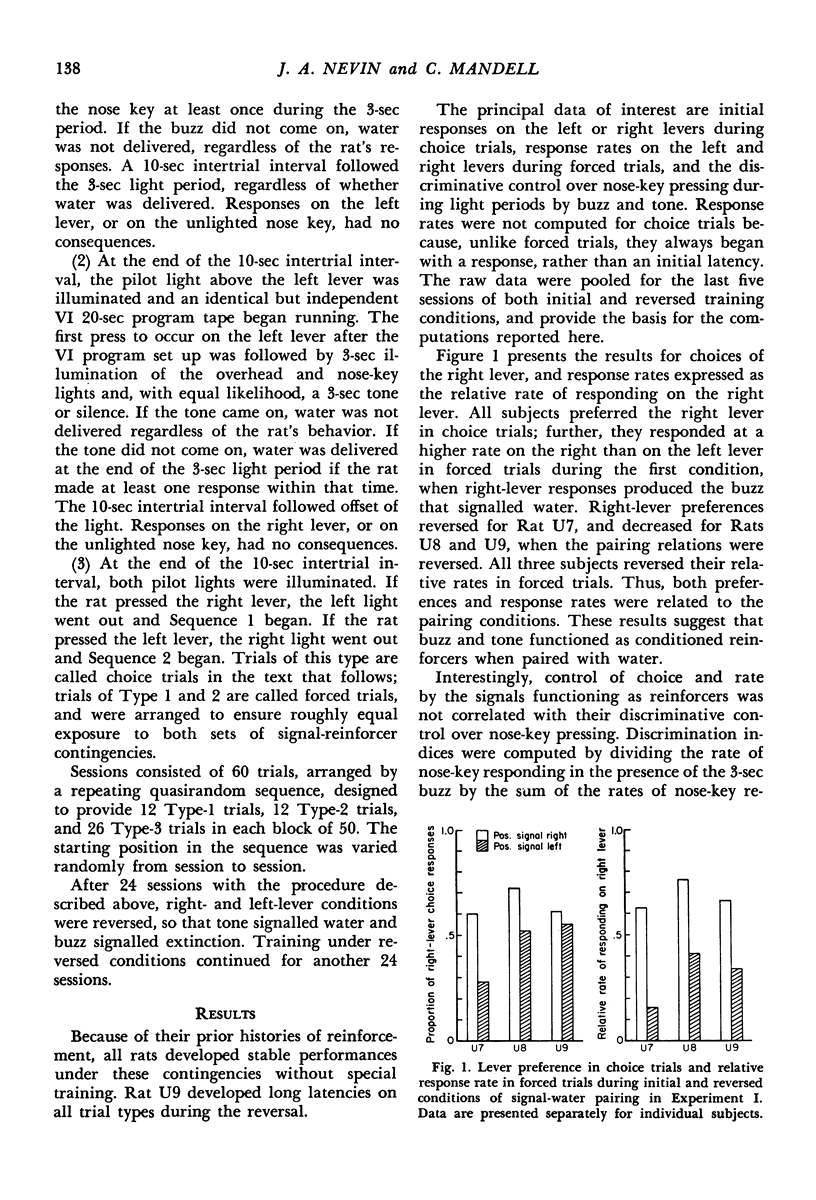

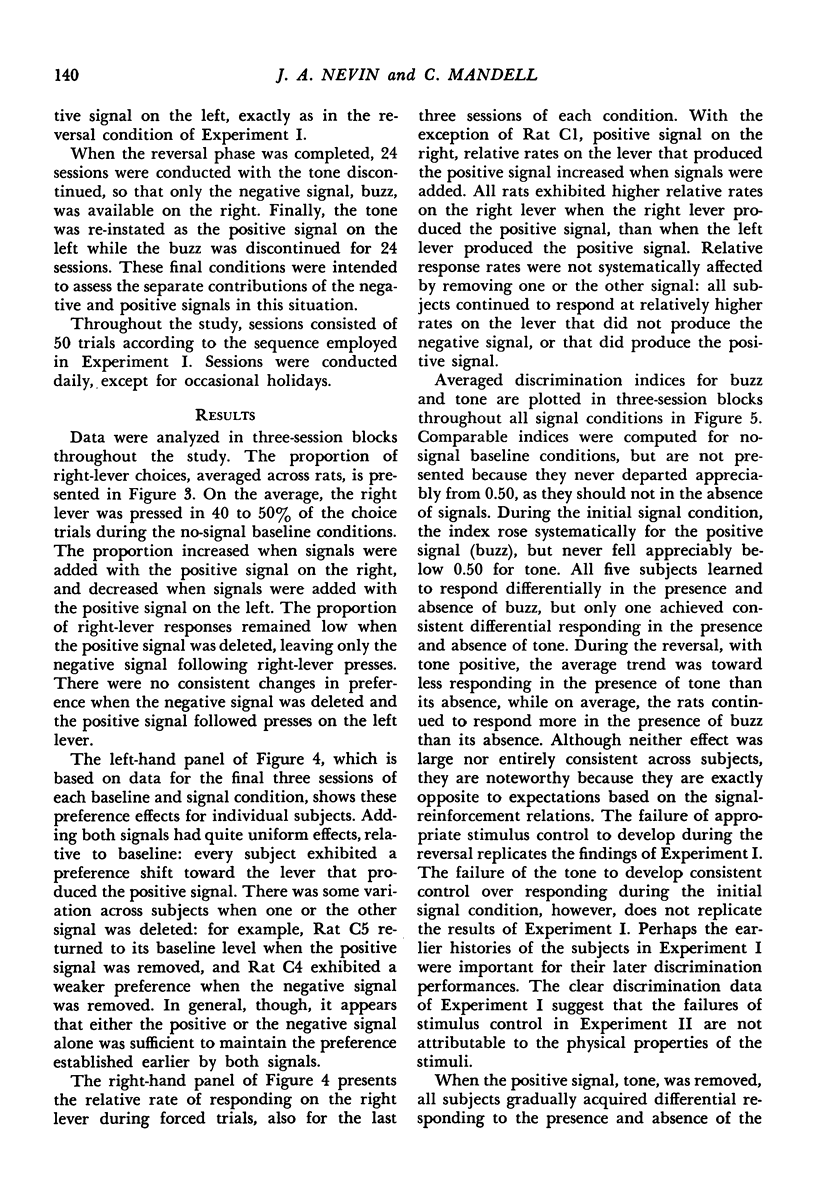
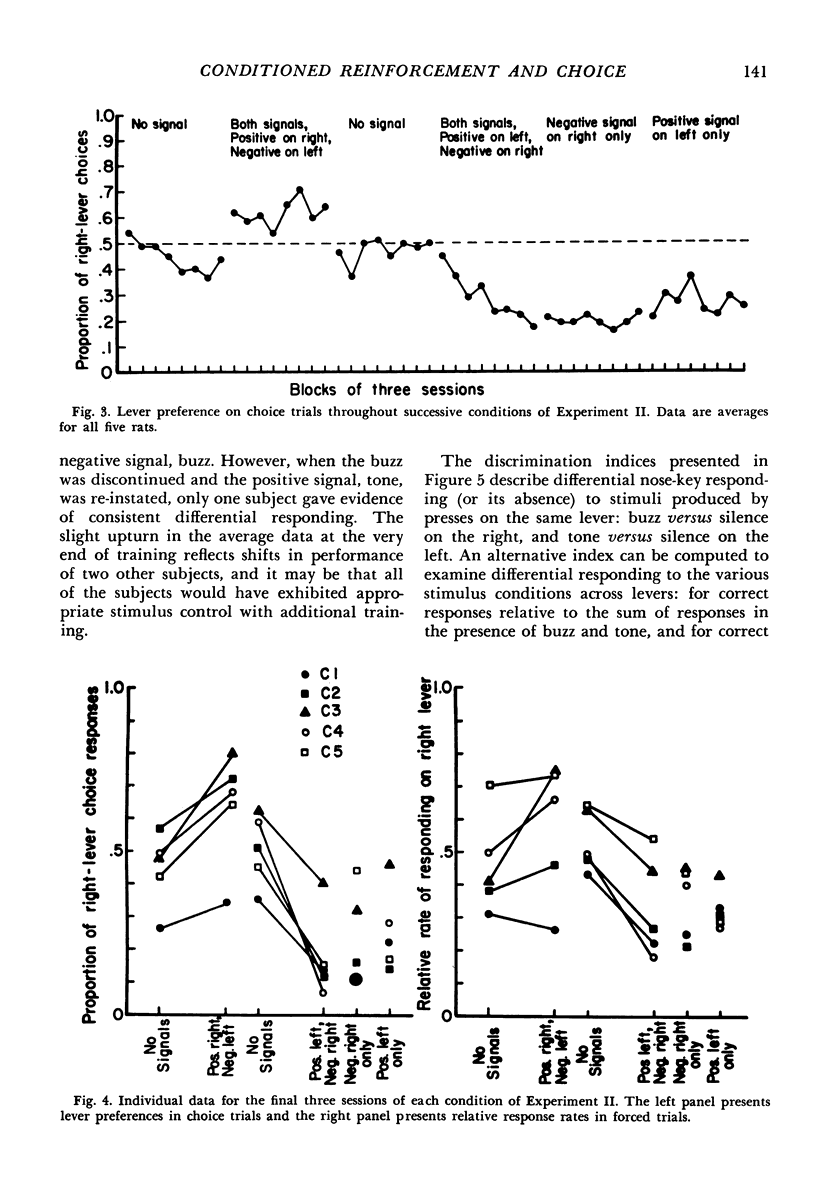
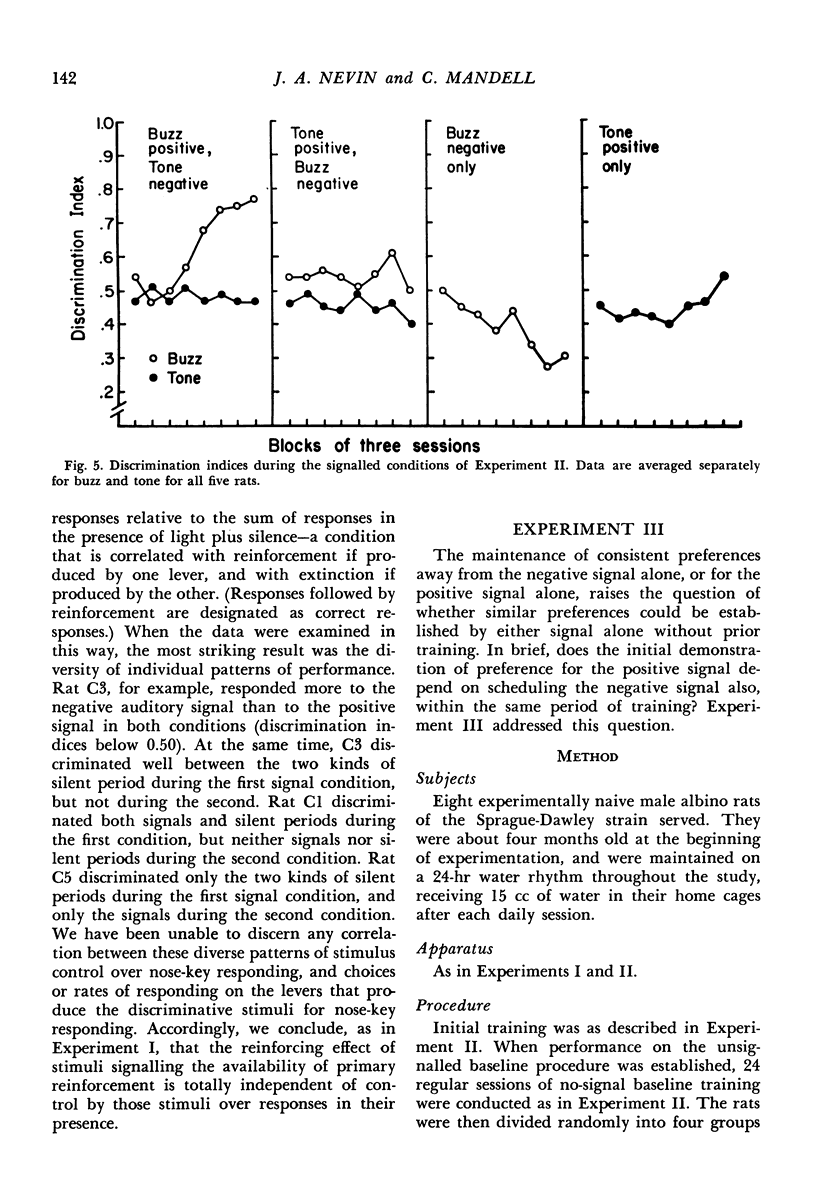
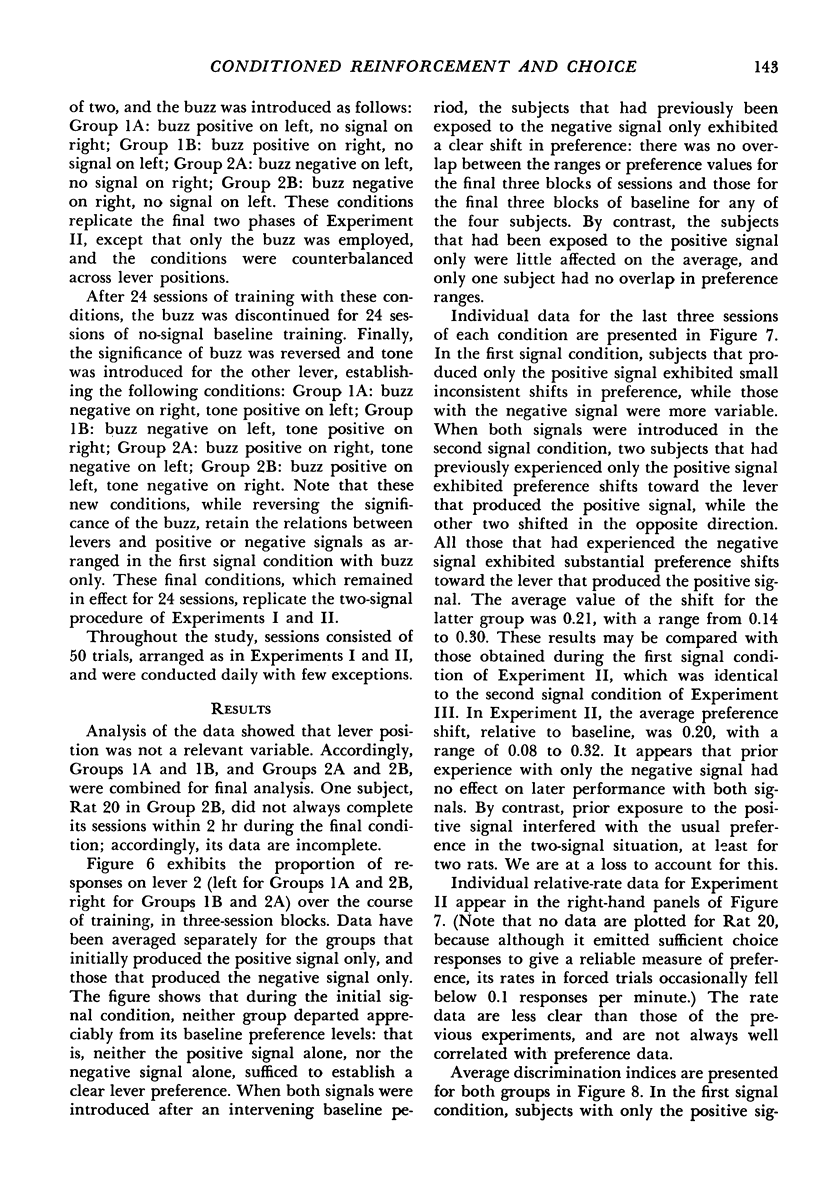

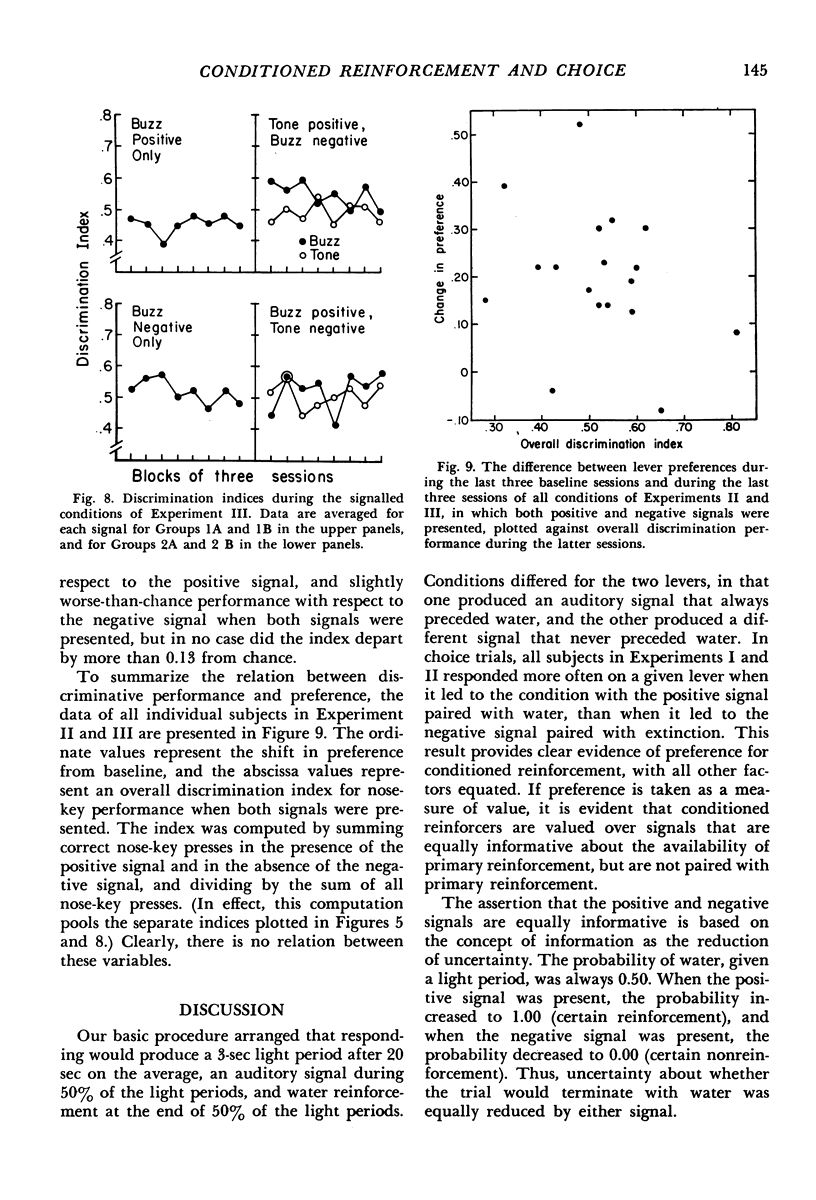
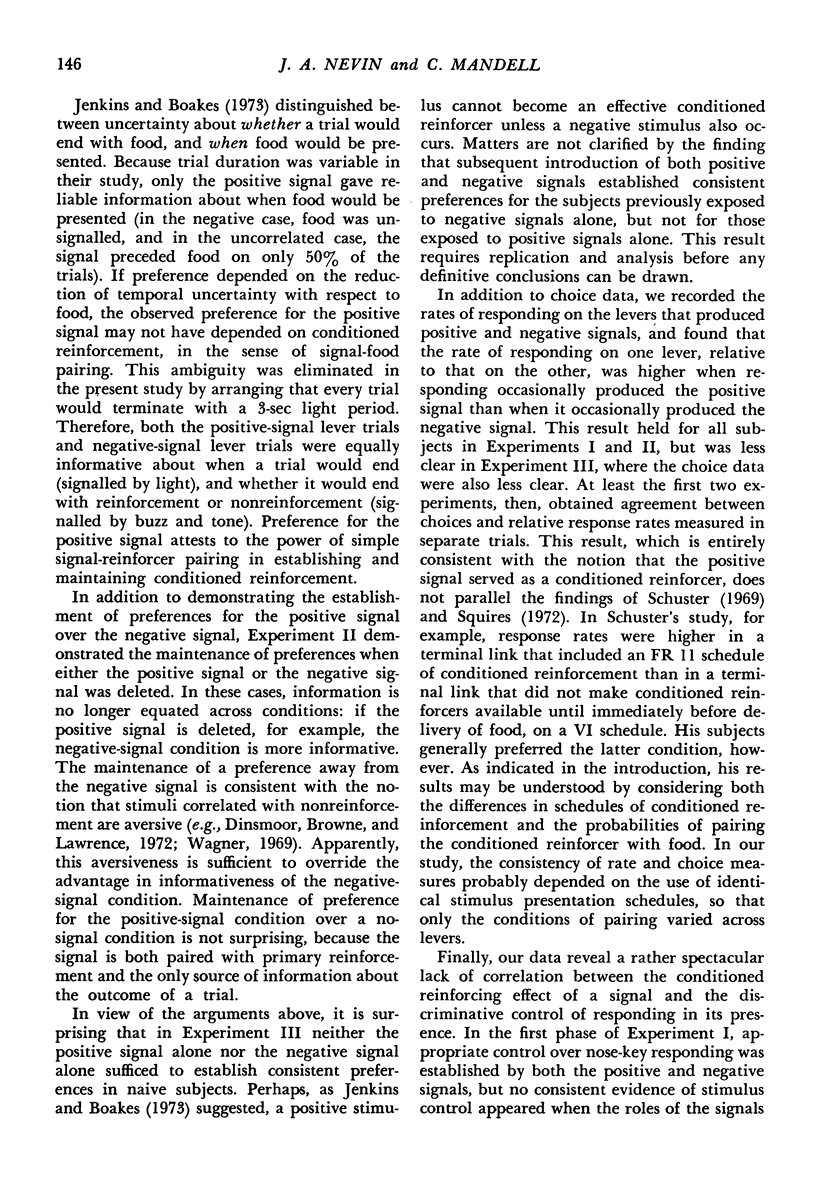
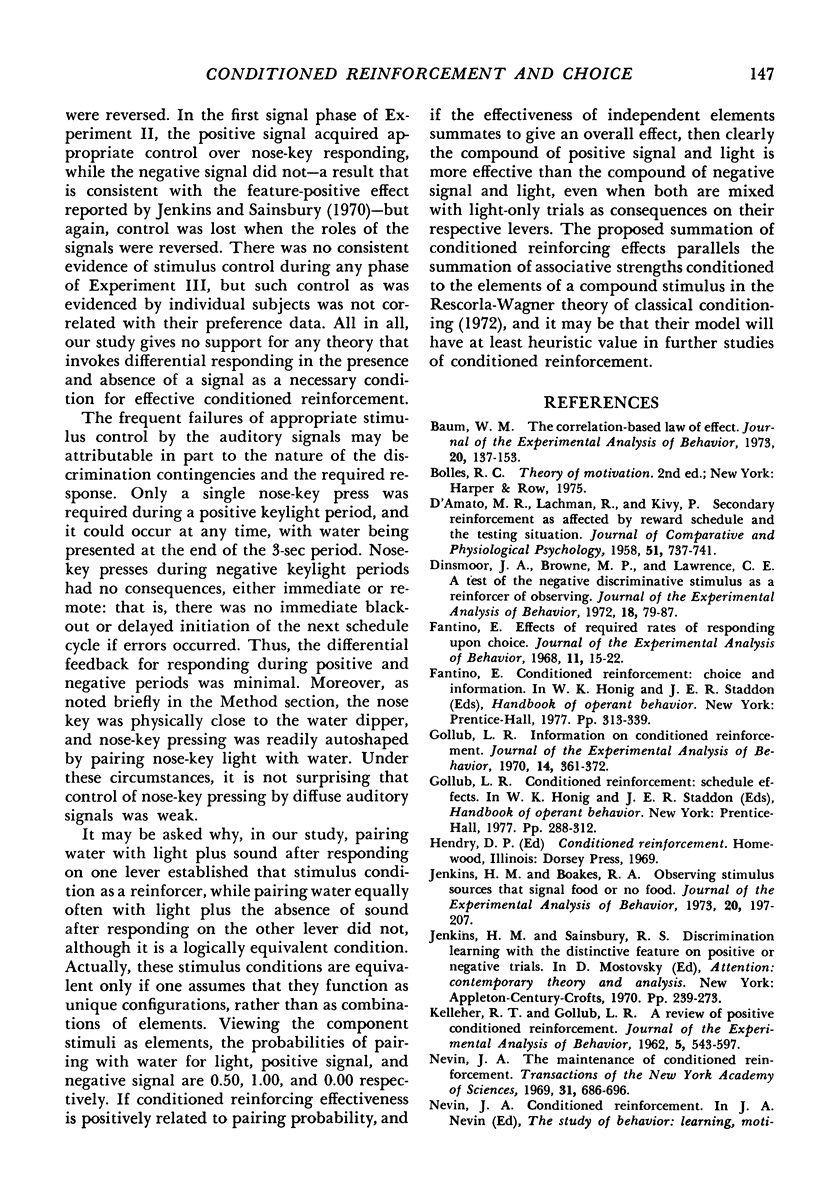
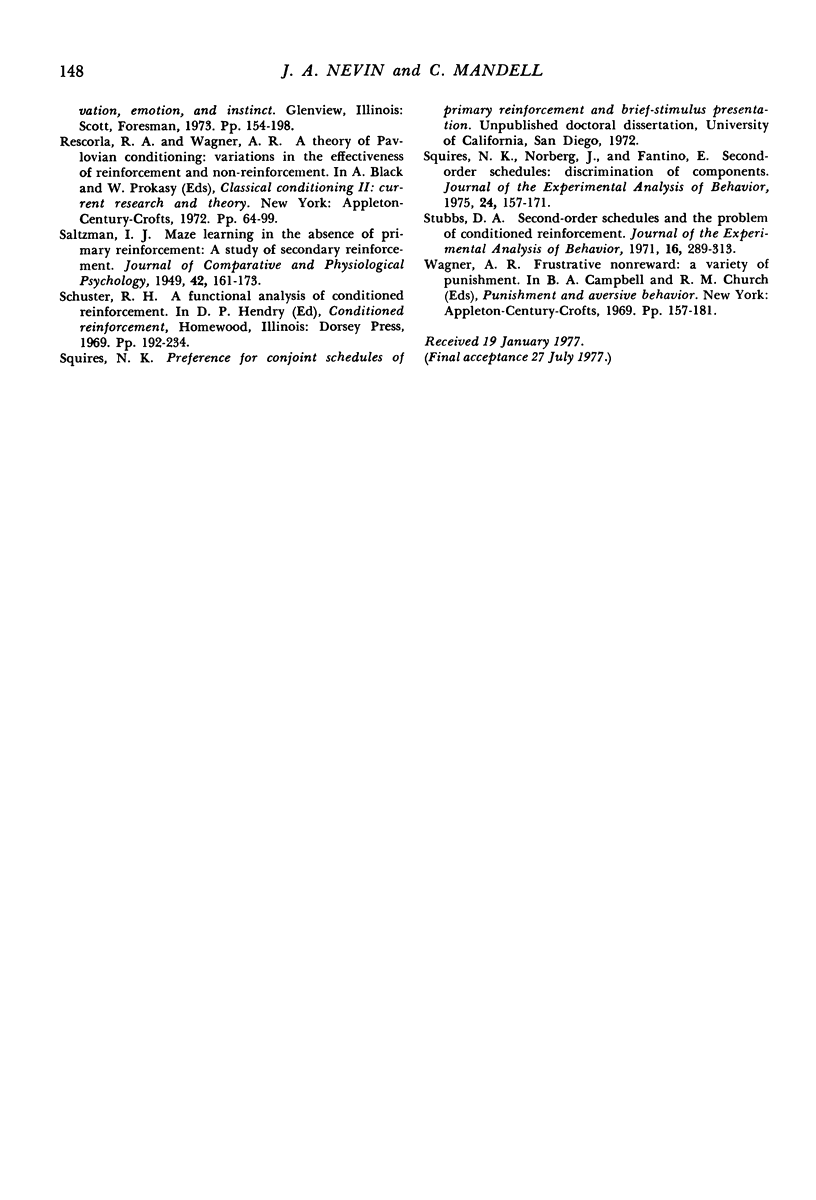
Selected References
These references are in PubMed. This may not be the complete list of references from this article.
- Baum W. M. The correlation-based law of effect. J Exp Anal Behav. 1973 Jul;20(1):137–153. doi: 10.1901/jeab.1973.20-137. [DOI] [PMC free article] [PubMed] [Google Scholar]
- D'AMATO M. R., LACHMAN R., KIVY P. Secondary reinforcement as affected by reward schedule and the testing situation. J Comp Physiol Psychol. 1958 Dec;51(6):737–741. doi: 10.1037/h0038446. [DOI] [PubMed] [Google Scholar]
- Dinsmoor J. A., Browne M. P., Lawrence C. E. A test of the negative discriminative stimulus as a reinforcer of observing. J Exp Anal Behav. 1972 Jul;18(1):79–85. doi: 10.1901/jeab.1972.18-79. [DOI] [PMC free article] [PubMed] [Google Scholar]
- Fantino E. Effects of required rates of responding upon choice. J Exp Anal Behav. 1968 Jan;11(1):15–22. doi: 10.1901/jeab.1968.11-15. [DOI] [PMC free article] [PubMed] [Google Scholar]
- Jenkins H. M., Boakes R. A. Observing stimulus sources that signal food or no food. J Exp Anal Behav. 1973 Sep;20(2):197–207. doi: 10.1901/jeab.1973.20-197. [DOI] [PMC free article] [PubMed] [Google Scholar]
- KELLEHER R. T., GOLLUB L. R. A review of positive conditioned reinforcement. J Exp Anal Behav. 1962 Oct;5:543–597. doi: 10.1901/jeab.1962.5-s543. [DOI] [PMC free article] [PubMed] [Google Scholar]
- Nevin J. A. The maintenance of conditioned reinforcement. Trans N Y Acad Sci. 1969 Jun;31(6):686–696. doi: 10.1111/j.2164-0947.1969.tb01992.x. [DOI] [PubMed] [Google Scholar]
- doi: 10.1901/jeab.1970.14-361. [DOI] [PMC free article] [Google Scholar]
- Squires N., Norborg J., Fantino E. Second-order schedules: discrimination of components. J Exp Anal Behav. 1975 Sep;24(2):157–171. doi: 10.1901/jeab.1975.24-157. [DOI] [PMC free article] [PubMed] [Google Scholar]
- Stubbs D. A. Second-order schedules and the problem of conditioned reinforcement. J Exp Anal Behav. 1971 Nov;16(3):289–313. doi: 10.1901/jeab.1971.16-289. [DOI] [PMC free article] [PubMed] [Google Scholar]


